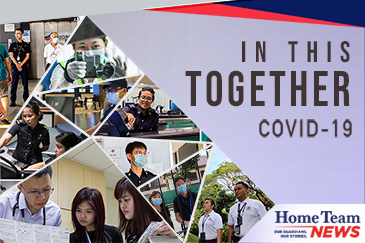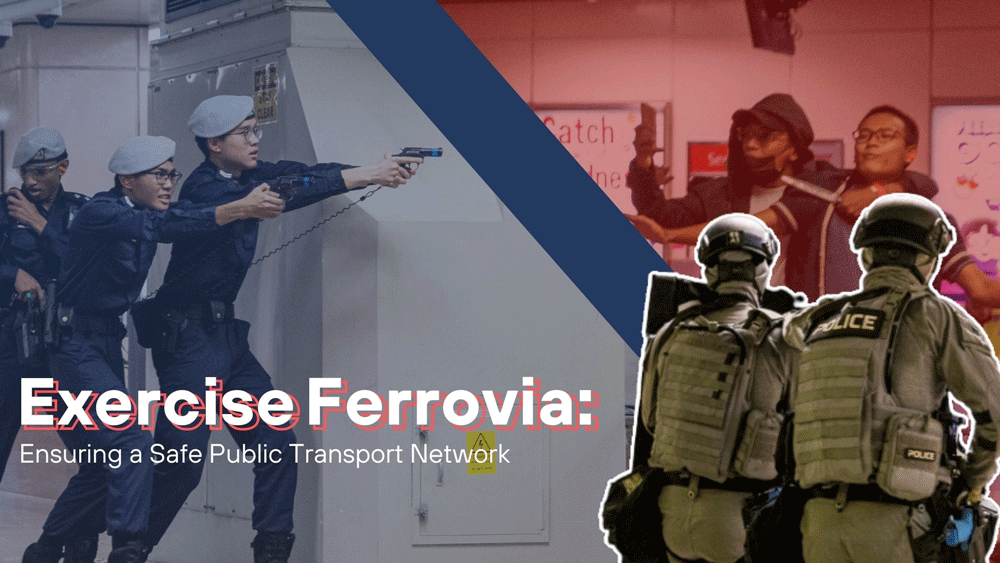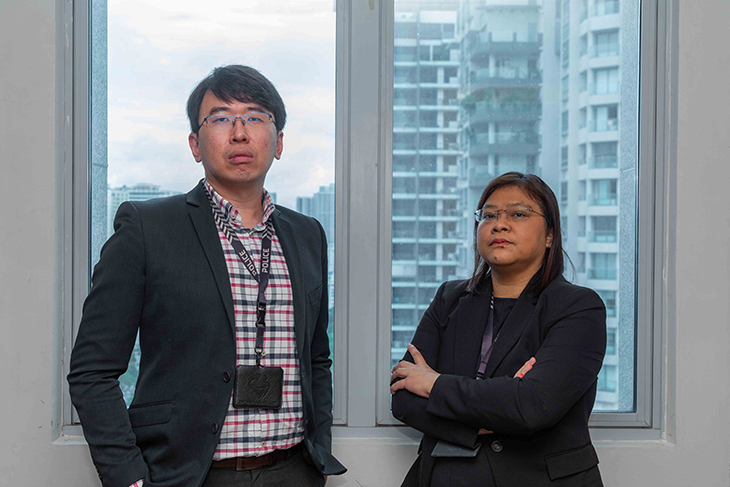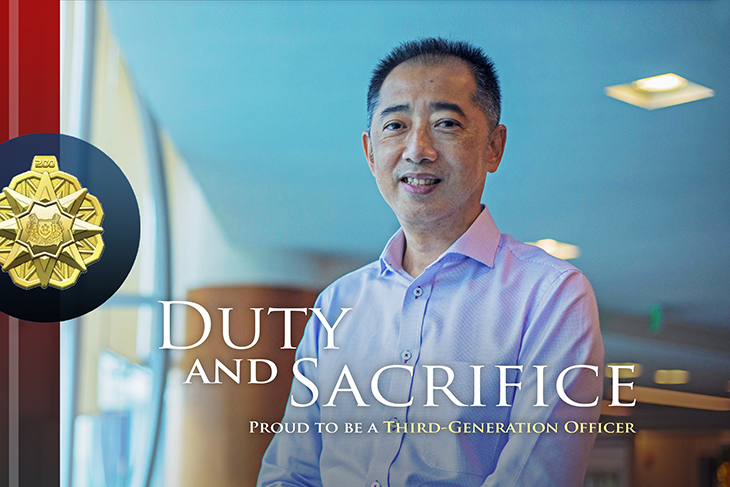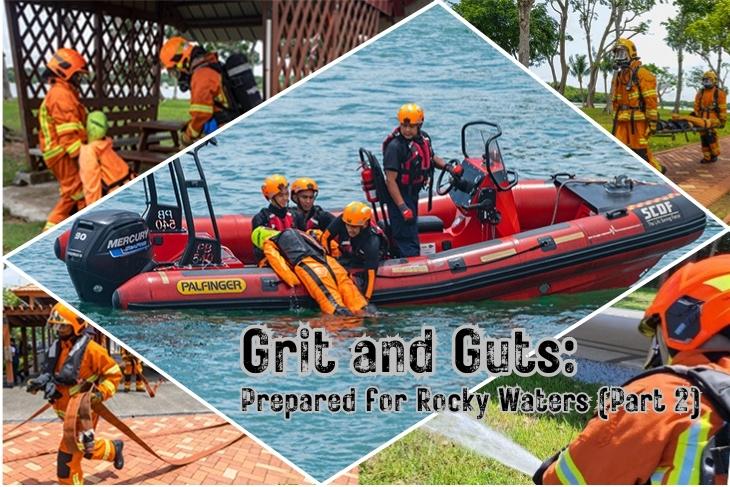
PHOTOS: Benedict Kok & Phoebe Leow. GRAPHIC: Arvind Chan.
In April last year, a raging fire that burnt down a cluster of shrines on Kusu Island took
Singapore Civil Defence Force (SCDF) officers merely an hour to put out, despite challenging conditions.
Their swift action did not come by chance, but by constant drills to sharpen their expertise. We find out how officers from Brani Marine Fire Station prepare themselves in a monthly offshore-island drill at Kusu Island.
First Drill: Firefighting and Rescue By 9am, officers were done with preparations for the drill – simulating a fire on Kusu Island with a casualty trapped inside a building.
A Marine Rescue Vessel (MRV), codenamed Red Dolphin, was deployed to Kusu Island alongside another smaller rescue vessel, the White Swordfish, a Rapid Response Fire Vessel (RFV). The MRV is the primary vessel for firefighting and rescue operations. The RFV has an enhanced rescue capability for shallow waters.
The journey from Brani Fire Station to Kusu Island took less than 30 minutes as SCDF officers skillfully navigated and berthed the MRV without any of us getting seasick.
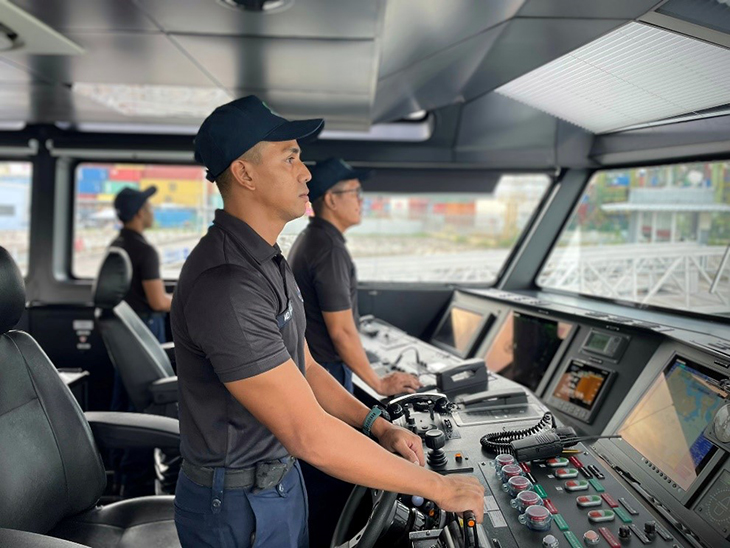
Inside the Red Dolphin, the MRV deployed to Kusu Island. PHOTO: SCDF
After alighting the vessel, the firefighters wasted no time and systematically began the rescue operations.
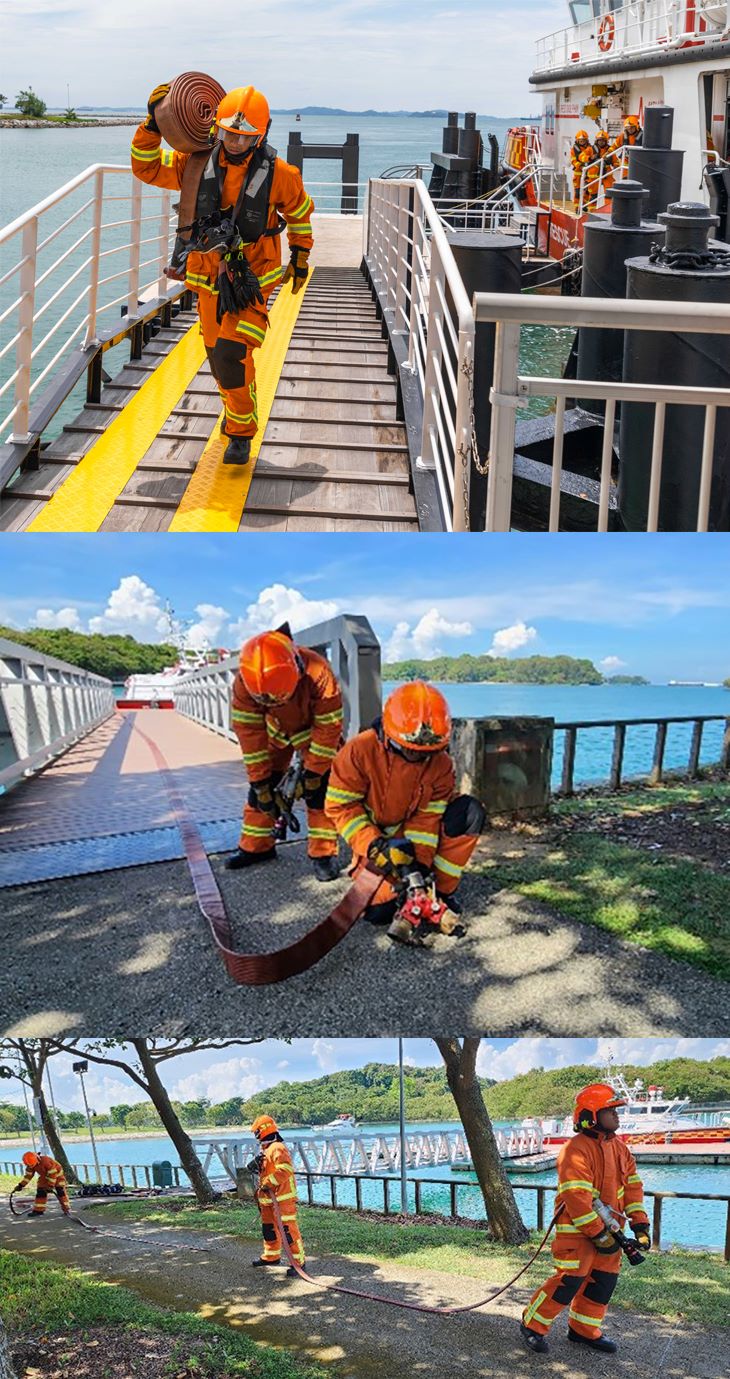
Officers carrying the hoses and equipment from the MRV onshore and setting up the hose line. PHOTOS: Joash Tan, SCDF
First, they set up a hose line made by connecting six 38mm hoses in relay-style towards the site of the fire in preparation for the water to be pumped from the sea via the MRV.
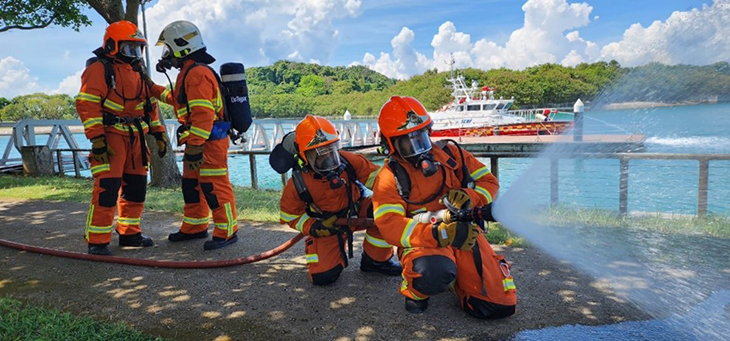
Marine firefighters maintaining their positions with the water jet. PHOTO: SCDF
Having connected the hoses, another firefighter formed up in line behind the officer holding the water jet, to support him in maintaining the fire attacking position due to the charged water hose. The officers put on their face mask and turned on their breathing apparatus before entering the burning building.
As one team battled the flames, another team prepared to rescue the casualty trapped within the burning building.
Immediately after the “fire” was extinguished, two officers holding a battery-operated spreader cutter rushed in to break down the door of the burnt building. Another two officers carried out the casualty to a safe area for medical attention.
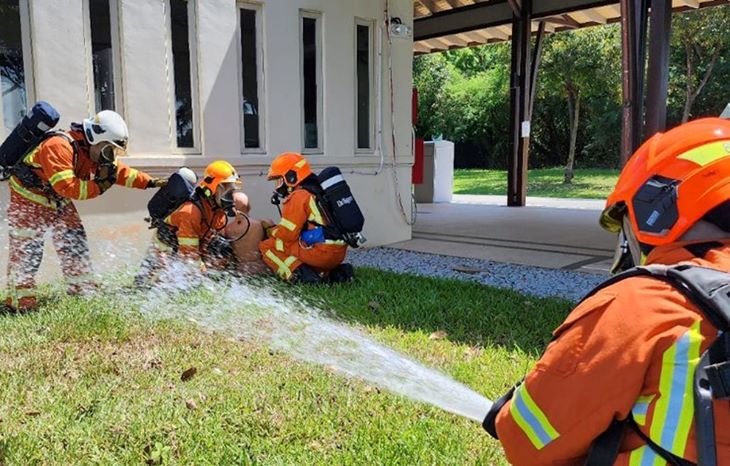
Firefighters extricating the casualty from the affected building. PHOTO: SCDF
Finally, the casualty was secured on a stretcher and carried back to the vessel while the remaining firefighters finished up the firefighting operations.

Firefighters carrying the casualty back to the MRV. PHOTO: SCDF
Second Drill: Rescue of Man-overboard
For the second drill of the day, the officers tested their response to a ‘man-overboard’ scenario, a situation where someone fell out of a vessel into the sea.
While the rescue might sound straightforward, the challenge posed was the risk of currents generated underwater by propellers of large vessels, such as the MRV, making it hard for officers to approach the casualty up-close from the rescue vessel.
As such, a smaller vessel without huge engines, known as the rigid-hull inflatable boat (RHIB), was deployed for the search and rescue operation.
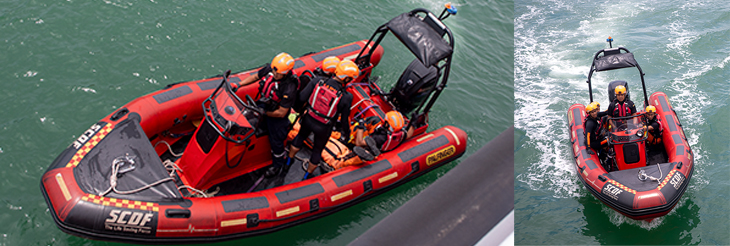
The RHIB in action. PHOTOS: Phoebe Leow
The RHIB, which combined various capabilities such as conducting quick appreciation of situation, surface search and rescue as well as firefighting, was deployed in shallow waters.
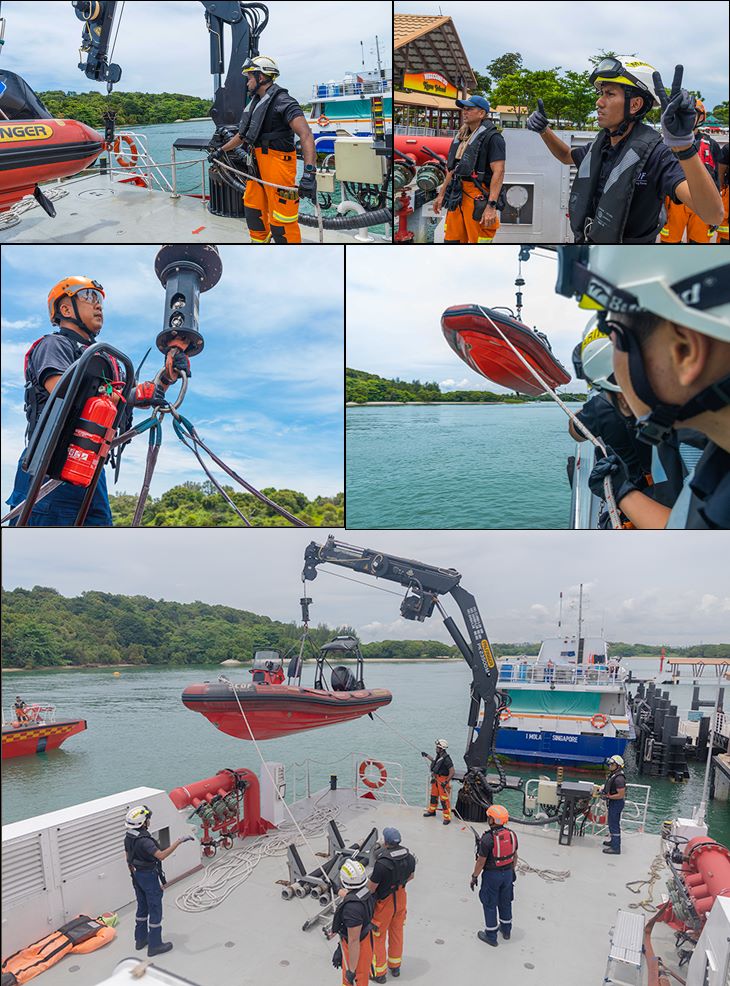
RHIB being deployed for rescue. PHOTOS: Joash Tan and Phoebe Leow
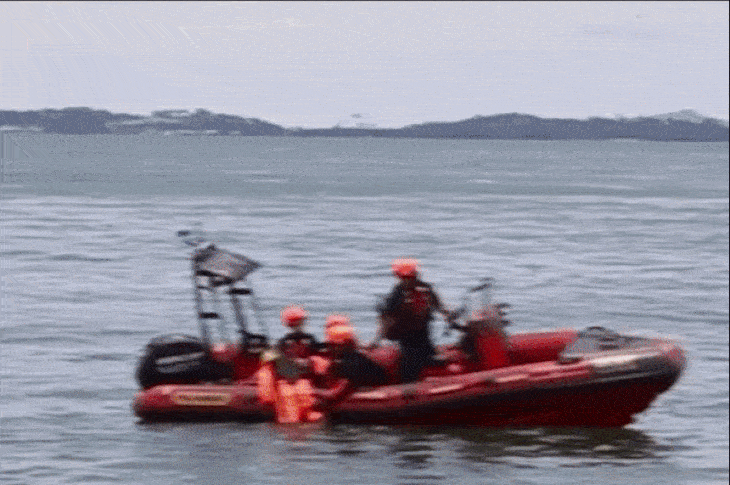
Officers pulling the casualty (a dummy) out of the water and transporting it onto the MRV. VIDEO: Benedict Kok. GIF: Arvind Chan
The successful sighting and rescue of the casualty signaled an end to just another day of drills.
Despite the physical strain from having spent hours to train for both scenarios, the Marine officers were still in very good spirits, knowing the tough training would put them in good stead to save lives whenever they were called upon.
Read
Part 1.










